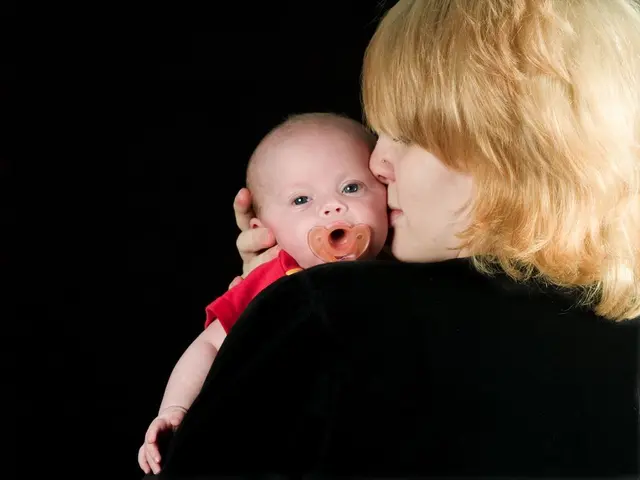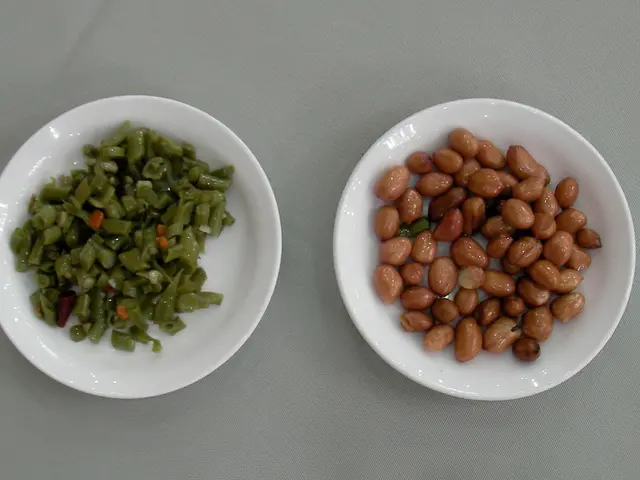Artificial Intelligence Compares Skills with Radiologists in Cancer Diagnosis
Artificial intelligence (AI) is making significant strides in the field of breast cancer detection and diagnostics, offering promising improvements in accuracy, efficiency, and predictive power.
**Improved Diagnostic Precision and Agreement Among Experts**
Recent research has shown that AI, when integrated with digital pathology, enhances diagnostic agreement among pathologists. For instance, in HER2-low and HER2-ultralow scoring, AI increased agreement to 86.4% and 80.6% (from 73.5% and 65.6%, respectively), while reducing misclassification of HER2-null cases by 65%. This improvement enables more accurate identification of patients who could benefit from targeted therapies [1].
In mammography screening, AI is now deployed to assist radiologists by highlighting suspicious lesions and improving detection accuracy. Eye-tracking studies show that AI tools alter radiologists' visual search patterns, helping them focus more efficiently on suspicious areas, thus increasing sensitivity for cancer detection without extending reading time [4].
**Reduction of False Positives and Negatives**
AI models like MIRAI can analyse mammograms and predict breast cancer risk up to five years in advance, potentially flagging patients who might otherwise be missed by current screening protocols and reducing false negatives. Moreover, by providing decision support, AI helps radiologists devote more attention to ambiguous or subtle findings, thus reducing the chance of both overlooking cancers (false negatives) and unnecessary recalls (false positives) [4].
**Future Implications**
AI is evolving to serve as a prognostic and predictive biomarker, not just a detection tool. For instance, in pathology, AI-driven scores like CAPAI (using H&E slides and pathological stage data) can better stratify recurrence risk, even in cases where traditional markers like circulating tumour DNA yield false negatives [1].
AI models such as MIRAI have been validated across diverse populations and imaging equipment, making them potentially deployable worldwide as clinical decision support tools [3].
**Integration into Clinical Workflows**
AI is increasingly seen as an integral part of the clinical workflow, supporting both radiologists and pathologists by providing second opinions, highlighting critical findings, and reducing diagnostic variability [1][4]. By more accurately identifying patients who will benefit from targeted therapies and risk stratification, AI supports the shift toward personalised medicine in breast cancer care [1].
**Challenges and Opportunities**
The "black box" nature of some AI algorithms remains a challenge, as clinicians may not fully understand how decisions are made [3]. Widespread adoption will require robust validation, regulatory approval, and attention to ethical issues such as data privacy and algorithmic bias [3]. AI can significantly reduce workload for radiologists by streamlining the review of normal cases, allowing more focus on complex or ambiguous findings [2].
**Summary Table**
| Aspect | Current Status | Future Implications | |-------------------------------|-----------------------------------------------------|---------------------------------------------| | Diagnostic Accuracy | Increased agreement and reduced misclassification | Further integration with biomarkers | | False Positives/Negatives | Reduced by AI decision support | Continued improvement with advanced models | | Clinical Decision Support | Used in readouts and risk prediction | Routine part of clinical workflow | | Integration | Large-scale studies underway | Global deployment, personalised medicine | | Challenges | “Black box” nature, regulatory hurdles | Need for validation and ethical oversight |
**Conclusion**
AI is already enhancing the accuracy, efficiency, and predictive power of breast cancer detection and diagnostics. Its current impact on reducing false positives and negatives is significant, and ongoing advancements suggest a future where AI is a cornerstone of clinical decision support and personalised medicine in breast cancer care [1][3][4]. The clinical implementation of the AI system will require regulatory approval and seamless workflow integration.
- Artificial intelligence, when integrated with computer vision and digital pathology, has demonstrated the ability to enhance diagnostic agreement among pathologists, especially in HER2-low and HER2-ultralow scoring.
- In the field of health-and-wellness, AI models like MIRAI are being developed to analyze mammograms and predict breast cancer risk up to five years in advance, potentially reducing false negatives and increasing the accuracy of screening protocols.
- Deep learning algorithms in AI are evolving to serve as prognostic and predictive biomarkers, better stratifying recurrence risk for breast cancer patients and potentially yielding more accurate results than traditional markers like circulating tumor DNA.
- With advancements in technology, AI models like MIRAI have been validated across diverse populations and imaging equipment, making them potentially deployable worldwide as clinical decision support tools in the medical-conditions domain, including breast cancer.
- The increasing integration of AI into clinical workflows offers opportunities for radiologists and pathologists to receive second opinions, focus on critical findings, and reduce diagnostic variability, supporting the shift towards personalized medicine in health-and-wellness sectors like health-and-wellness and the medical-conditions industry.




